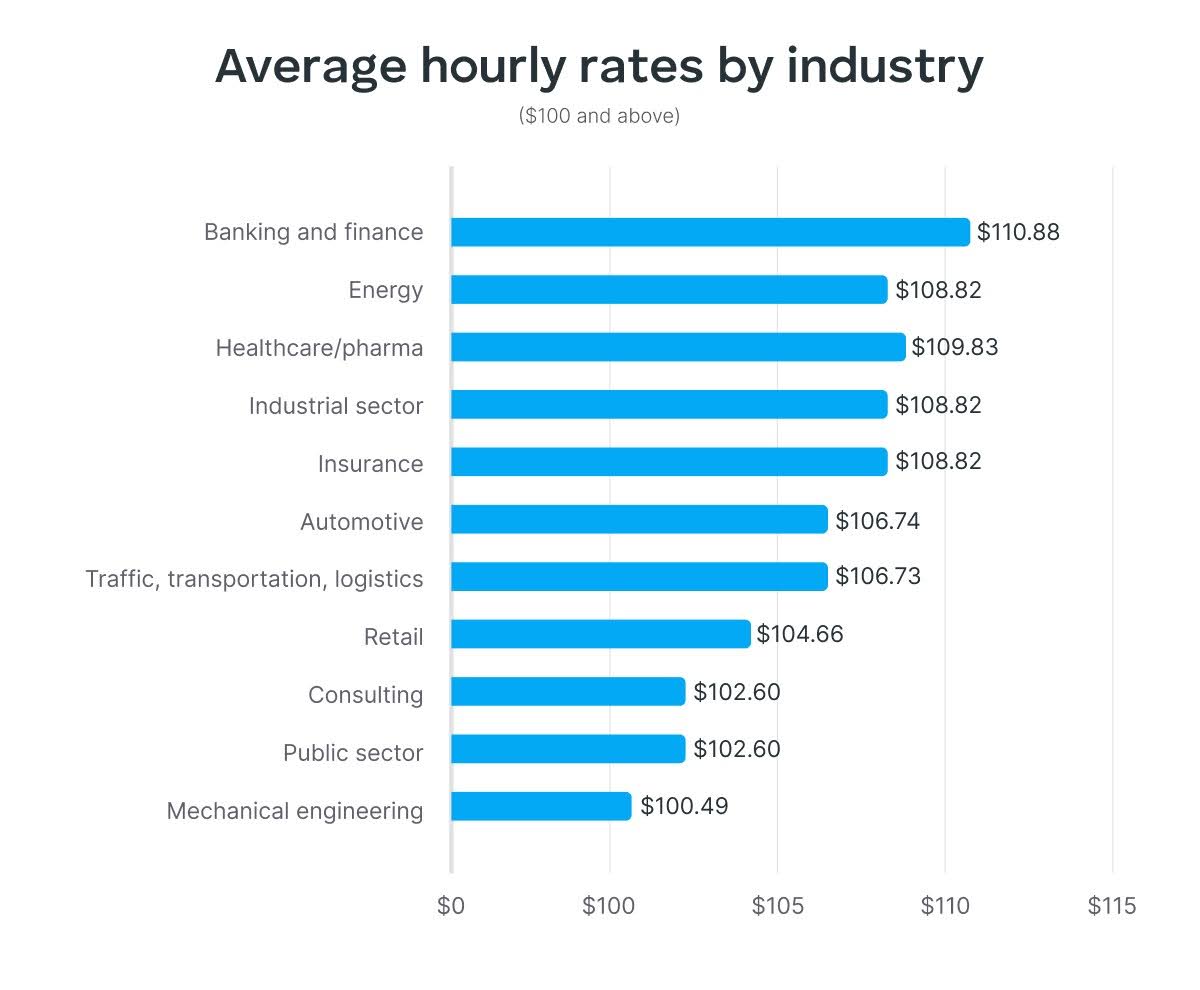For many people, freelancing has gone from a pandemic-era trend to a mainstream career path. In many cases, freelancers outpace the earnings of their full-time peers.
However, that doesn’t mean freelancing is easy.
To survive and thrive as a freelancer, you need plenty of skills that 9-to-5 workers don’t have.
Let’s see what freelancing strategies seasoned professionals use to succeed in this line of work.

Why working for yourself is tough
For a few years, while finishing college and starting my first full-time job, I occasionally did content writing. Working for various clients on diverse projects provided me with invaluable experience in pitching, negotiation, and business communication.
But the one thing I never seemed to get the hang of was earning more money.
I didn’t know how to expand my client base.
I had no idea how to up my rates and justify them to regular clients.
My confidence was awful, and I never valued my work properly.
Knowing I couldn’t provide seasoned freelance advice myself, I’ve contacted 2 good friends with relevant experience. One of them is Stefan Radojčić, who waded through thick and thin of freelancing to become a brand communication manager.
The other is Jovana Zorić, who loved to write but ultimately decided to swap the uncertainty of freelancing for more secure work as head of customer success at a software development company.
Stefan and Jovana went through similar freelancing hardships, but came out on 2 very different ends. I put them on a call one night and picked their brain on what it takes to advance in the saturated freelancing market.
Here’s what they had to say.
Freelancing strategy #1: Never undersell yourself
Stefan mentioned that his biggest mistake from the outset was pricing his services too low. His first piece of advice to newbie freelancers is — value your work more.
He was adamant about charging by the hour when you start out. Some more experienced freelancers charge by the project, but accurately assessing the time you’ll need for the entire project before it’s done takes a lot of skill and practice.
To ensure you’re paid for all your work, make sure you:
- Track the time you spend on research since, depending on the project and client, this could be the majority of your work,
- Take negotiations into account and track time spent on calls and emails (including cold emails) because they also take time, and
- Observe the time spent on revisions because clients may ask for major changes that take a lot of work.
You can use your time tracking software to generate a report for your clients.
When you track time in Clockify, the platform automatically generates reports in real time. For instance, the weekly report shows what tasks you worked on in the past week, and precisely how much time you spent on each one.
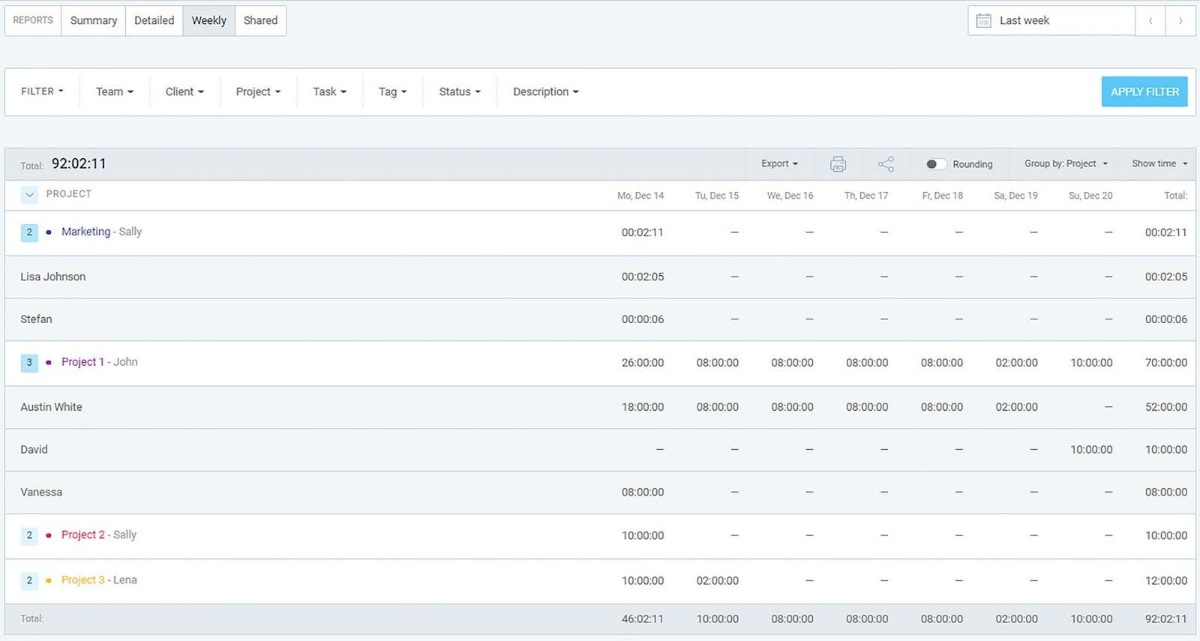
Clockify lets you share live reports with clients — even if they don’t have a Clockify account. All you need to do is:
- Select a time and project via report filters,
- Click the Share icon,
- Choose who can see the report, and
- Click Create link.
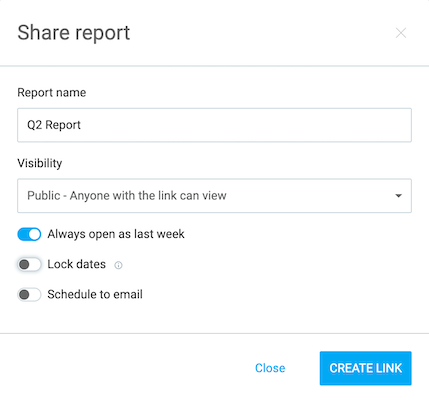
Now you simply share the report link with a client.
That way, both parties can see how much time was spent on what activity: actual work, meetings, emails, revisions, brainstorming sessions, etc.
If you decide to increase your rates, having detailed reports will be useful. It will be easier to show your value to clients and address any potential questions about the price change.
Get detailed reports with Clockify
💡 CLOCKIFY PRO TIP
We’ve created a free hourly rate calculator to help you out, which you can use from your browser:
Freelancing strategy #2: Research the market
To know how much you can earn with your niche and skillset, you’ll want to:
- Study other freelancers — See how they compare to you. What do they offer? How much do they charge for each service? Who were their clients? What kind of reviews do they get? What makes them stand out?
- Study your job market — Not every market is the same. Programmers will have vastly different prices and clients from content writers. Stefan himself said that looking at the supply and demand in the copywriting field helped him decide which services to offer and which to avoid.
If your market is saturated, you’ll have to work much harder to stand out, or shift to something with higher demand but limited supply.
Freelancing strategy #3: Learn to present yourself to others
One of the things Jovana and Stefan agree on is that the way a person presents themselves online impacts their chances of landing high-profile clients.
If you want to start earning more by attracting more serious clients, regardless of what you do, it’s important to have:
- A professional-looking photo of yourself,
- A LinkedIn profile that emphasizes your skills and strengths, projects you’ve worked on, prior client and coworker impressions, and
- An informative email template with your title, email, relevant links, and/or numbers at the bottom.
Think of it as putting your best self forward. A clean and clear online presence is more likely to draw in higher-paying clients.
In the process, you should also demonstrate a deep knowledge of the client’s business. Research shows that clients appreciate a personalized approach, with a direct positive impact on freelancers’ earnings.
💡 CLOCKIFY PRO TIP
Need help finding freelance gigs? Don’t worry, there are countless websites where you can find work as a freelancer. Take a look at this article for our top choices:
Freelancing strategy #4: Build a personal website and a portfolio
Stefan recounts that building a portfolio website helped him raise rates and reach more valuable clients:

“Probably my biggest price increase came after I had made a personal website. I would talk to potential clients on a platform, whether it’s Upwork or LinkedIn, and then I’d direct them to my website if they wanted to learn more about what I do.”
A quality website can take a big chunk of pressure out of the initial communication with the client. There’s less of a need to make the perfect pitch or use strategic phrases just to get their attention. You let the portfolio speak for you.
Depending on the industry you work in, the design, the layout, and specific examples for the portfolio will vary. Luckily, today we have numerous hosting websites and platforms that cater to freelancers of all skill levels, including:
- WordPress is a solid, safe choice for any beginner who wants a little more control over their website. Stefan himself lists this as an important reason for using it in the beginning:

“I really wanted to make it cool, and I wanted to be proud of it, even though making it aged me from all the stress, since I can’t code at all.”
- Wix is a website-building platform with hundreds of templates to choose from. They’re categorized according to the type of work you do — designers, writers, small business owners, architects, educators, hoteliers, travel agents, and more.
- GoDaddy is similar to WordPress, but it differs in that it allows users to create their websites by simply dragging and dropping boxes onto the layout. It’s easy and accessible, but not as feature-laden as WordPress.
Freelancing strategy #5: Learn to upsell yourself
Upselling is a technique sales experts use, but it’s also one of the most common freelancing strategies.
One example is when McDonald’s used to offer customers the option to supersize their meal at checkout. Instead of regular fries or soda, they’d get the largest size for a fraction of the price.
The same technique is used by car salesmen when they offer the same model but with leather seats, or by Dollar Shave Club, which places its most expensive products smack-dab in the middle of the landing page.
Now, before you dismiss this as a sneaky tactic, consider that numerous businesses (and individuals) need ways to stand out from their competitors. And there’s no scamming involved — you’re simply playing the game smart.
On this point, Stefan gave a great example of an interaction with a client:

“I had this client contact me. I think they wanted me to write a short pitch. But, by that time, I no longer did copywriting projects of such a small scale. I’ve moved on to more lucrative work. I did, however, visit their website, which they linked to, and honestly, it looked rough. It was bad.”
After analyzing the client’s website, Stefan opted for the most direct upselling approach:

“So I replied and was straightforward — ‘Look, I can write the most perfect pitch for you, but the fact is people will visit your website and potentially be turned off by it. You won’t convert clients that way.’ She understood me, and asked if I did websites, which was the more lucrative work I was doing at the time.”
Through just a couple of messages, he landed a project that potentially earns him 5–10 times more money. Also, excelling in a higher-profile job like that earns the client’s trust and may even convert them into long-term clients.
Of course, this isn’t the only upselling method. There are great examples of how brands upsell, especially in e-commerce. With a little brainstorming, you can easily adapt some of those methods to suit you.
Freelancing strategy #6: Use the stacking tactic
As we discussed upselling, Jovana was reminded of Russell Brunson, a serial entrepreneur and author of Traffic Secrets. In one of his webinars, he mentioned a marketing tactic called “stacking.”
For Brunson, this is one of the simplest freelancing strategies: “Make the thing that you are offering so much more valuable than what you’re asking for in return.” As he likes to illustrate, would you rather go on a date with a person who approaches with:
A: “Would you go out with me sometime?”, or:
B: “I was wondering if you wanted to go see this new movie they are showing? We can go to lunch before that, I know a great Italian place. And there’s a cool little coffee shop that recently opened up, we can go thereafter.”
The difference is that person A is asking for a date without stating clearly why YOU would want to go out. All they know is that it benefits them. On the other hand, person B openly shares the experience you’ll have, making the offer much more tempting.
The same is in business. Jovana summed it up nicely:

“Clients most likely won’t know how important that landing page is, or the brochure they want, or what goes into a brand’s logo design. You need to point that out and let them know the value of what you bring to the table. You need to go the extra mile, but with things that won’t necessarily take a lot of time, like preparing a landing page, proofreading, a website wireframe, etc.”
Freelancing strategy #7: Use a time management tool
As a freelancer, you know your work hours aren’t set in stone.
Unlike your 9-to-5 counterparts, you set your own schedule — both a gift and a curse.
When I worked as a freelancer, I found it challenging to balance my current work with the ongoing search for new clients, while also avoiding procrastination.
Trust me, I learned this the hard way — you need a lot of self-discipline. And to maximize your billable hours and maintain a decent work-life balance, you need a firm grasp of your time.
You must know precisely how long each task takes. Otherwise, you’ll make inaccurate estimates and miss deadlines. Clients won’t take you seriously, and eventually move on.
In my experience, getting a time management app was a game-changer. Most successful freelancers use them for their work. It’s only a matter of choosing the right tool for your specific needs.
Clockify is a free time tracking app for freelancers that lets you see how productive you really are with your projects and tasks.
With Clockify’s handy auto tracker, you can automatically track the time you spend on different apps and websites.
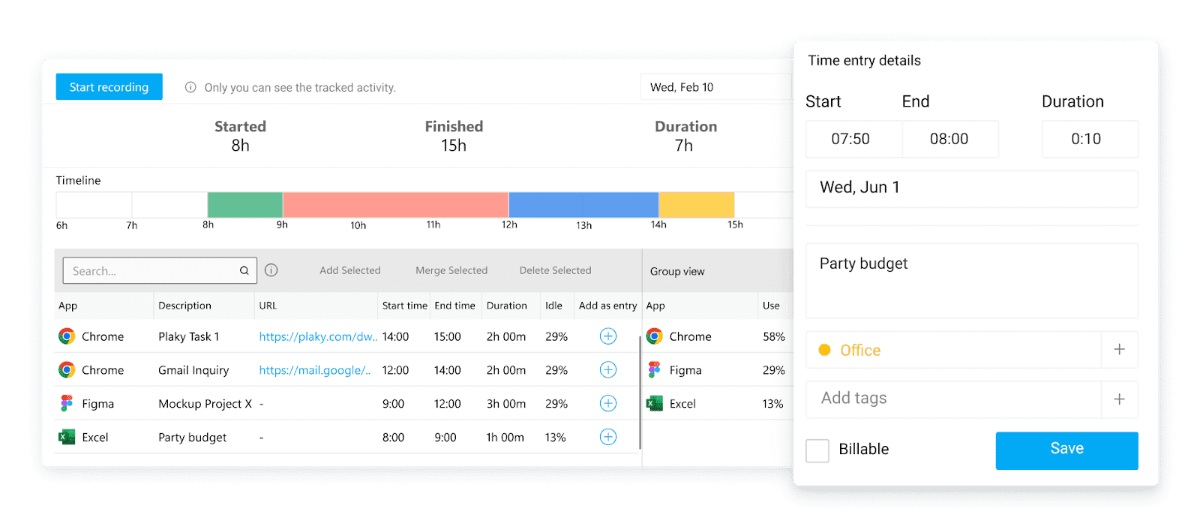
The auto tracker provides a real-time breakdown of how you spend your time. If you’re procrastinating or spending too much time on a low-profit client, you can quickly spot your mistake and adjust.
You also have the option to use a simple timer in Clockify to track your tasks or manually fill out timesheets within the app.
Freelancing strategy #8: Stick to your specialty, but be ready to expand
In your pursuit of higher earnings, it’s logical to work on expanding your skillset. Whether it’s through additional courses, studies, articles, YouTube tutorials, etc.
However, Jovana believes that freelancers should stay in their lane and not expand too much:

“As a content writer, for example, you’ll want to learn how to make and hold engaging presentations, create wireframes, perfect proofreading, and so on. You don’t go into it ready to learn coding because maybe some client one day will need those services too. You’re just stretching yourself thin, and it won’t help you earn more money.”
Stefan adds that if you want to start earning more through skills, you should follow these steps:
- Start inside a niche (like copywriting, for example) and offer as many services within that niche.
- Find one aspect of your niche you know you’re good at and love doing. Work on perfecting that skill and those related to it.
- Perfect a service enough to have, as Stefan calls it, a high-impact skill — one that you can justifiably charge more for.
However, you may also reach this skill’s “ceiling” and can’t raise your price for that service beyond a certain point. That is when you look into related fields for skills that will help you broaden your portfolio. And the cycle begins anew.
Stefan himself says he used to do everything, including copywriting, content writing, and marketing. Over time, he narrowed his services down and worked until he noticed he was reaching the skill ceiling: there was nothing new to learn, nor could he get better. What’s more, there was no real way for him to up his rates.
To keep evolving as a freelancer, he gradually transitioned to building brand strategies. It was a new field (but still in the marketing niche), a good learning opportunity, and most importantly, it paid more.
Freelancing strategy #9: Practice your negotiation skills
Negotiations are a big part of a freelancer’s career, especially negotiating rates. After all, you’re your own agent, marketing strategist, and salesman.
Most of the time, earning more money means increasing your rates, which involves communicating with clients and convincing them why your services are worth the additional cost.
When I asked Stefan and Jovana about their own negotiation experiences, both of them had a few valuable nuggets of wisdom.
Nugget of wisdom #1: Treat freelancing platforms as marketplaces
Even Upwork advertises itself as a talent marketplace. So, Jovana advises looking at these platforms like eBay:

“If I want to sell some computers, I can just list them on eBay or Craigslist and have people find them just by browsing the site categories. But if I want to sell them without a platform, I’ll have to come up with an ad, find papers that will print them, pay for it, and still the outreach will be much smaller.”
Job websites are a great starting point for every freelancer. You can have dozens of interactions with clients each day, which, in itself, is a great help in building the appropriate skills and confidence.
Nugget of wisdom #2: Know that confidence and patience can’t always be learned
Stefan shared the example of a friend who started as a freelancer but quickly realized how much he disliked negotiating prices and the fickle nature of clients. And since he had no patience or drive to become better, he quit freelancing.
It’s good to first check with yourself how well you communicate with clients, what your patience threshold is, and how well you can project confidence. Will rate negotiations be easy for you, or is it something that can be a potential hurdle?
The harsh reality is that negotiations will play a big part in how much you earn. And if you can’t overcome certain fears or issues (lack of confidence, anxiety, antisocial behavior, irritability), then you may not have a bright future in freelancing.
Track freelance hours for payroll
Freelancing strategy #10: Be ready to let some clients go
In our humble freelancing beginnings, we were all justifiably wary of losing clients. After all, when you don’t have much work and you’re still building a presence online, there’s the urge to cling to any work, even if it pays less than we want to.
So, it’s unsurprising that you’re afraid of losing clients if you up your rates. However, it’s a risk every freelancer needs to face at some point. As I’ve interviewed them, Jovana pointed out how this was the difference between Stefan and her as freelancers.
Where he was willing to raise prices at the expense of old clients who weren’t willing to scale with him, she was reluctant. Moreover, she had trouble letting go of clients she knew wouldn’t be willing to pay more because she needed the work.
As Stefan says, you need to do some introspection:

“I’m working with these types of clients right now who are paying X amount of money. Who are the ‘2.0 clients’ who will be willing to pay more?”
Track client payments with Clockify
Freelancing strategy #11: Use the fear of missing out to test the waters
As our conversation neared its end, Jovana mentioned a tactic she often sees in business as a marketing specialist:

“If you’re unsure how your existing clients will react to a rate increase, you can announce it to them via email a month or two before you actually raise prices. Aside from it being a heads up to gauge how well your clients accept the increase, you use the opportunity to create FOMO (fear of missing out).”
To ease the client into a price increase, Jovana hooked them with a small promotion:

“Let them know that, if they aren’t willing to hire you again after the increase, they can still use your service at the current, more affordable price. Kind of like a promotional period.”
The clients who’ve learned to trust you and got used to your quality of work will probably stay. Those who value low expenses over high-quality work will probably pass up the opportunity, which is a blessing in disguise.
Freelancing strategy #12: Look everywhere for new ideas
Stefan shared how he created a zone for himself, where he found inspiration in seemingly everyday things. He was getting inspiration from “Wolf of Wall Street,” or while browsing websites of his clients and peers.
It’s essential to establish a framework that aligns with your personality and career objectives. One study suggests that learning opportunities and freedom are crucial motivators for freelancers. And when you know where to look, everything is a learning opportunity.
After all, how many times have you heard entrepreneurs who found inspiration in fictional characters? Nearly 20 years later, the infamous “coffee’s for closers” scene from Glengarry Glen Ross inspires millions of people. So, study movies, books, and podcasts, look for inspiration in people and philosophies that represent you.
Scale your freelance career with Clockify
Besides helping you manage your time, Clockify also lets you manage your freelance career. For example, the platform can automatically generate invoices for you based on your time entries — like below.
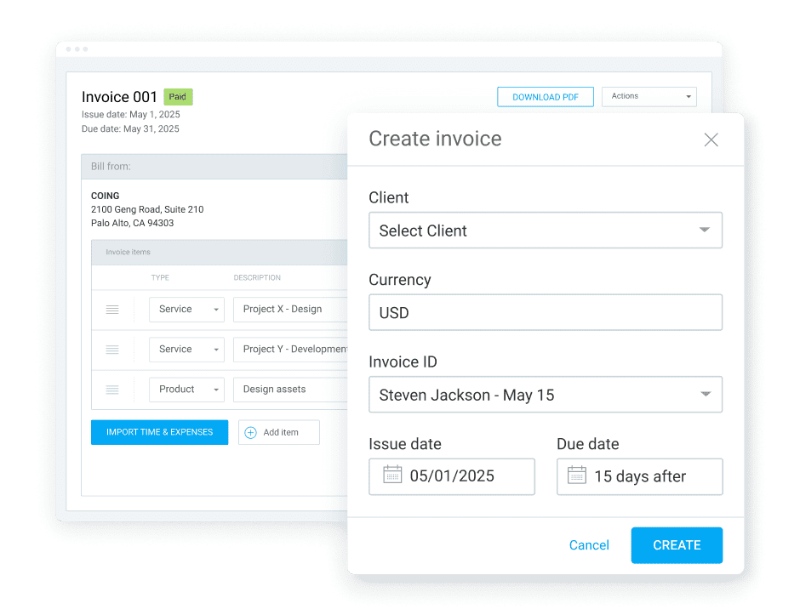
You can even email the invoices to clients directly from Clockify, without leaving the platform. Staying on top of client payments is also easy thanks to powerful invoice management features.
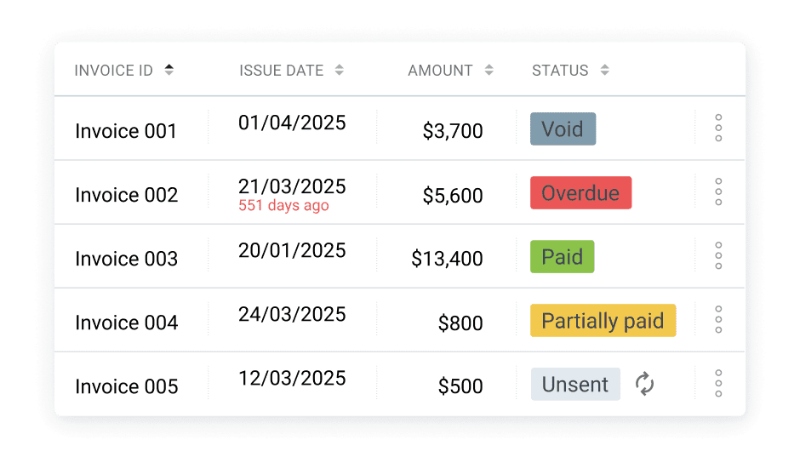
Interestingly, you can easily mark each invoice as unsent, partially paid, paid, void, or overdue. With simple color-coded labels, you’ll always have a clear view of outstanding payments and your profitability.
Finally, you get to integrate Clockify with 80+ various tools, such as:
- Project management apps, like Trello and Todoist,
- Development apps, such as Jira and GitHub,
- Business apps, including Zendesk and Salesforce, and
- Other necessary apps, such as Evernote, Google apps, etc.
Stop wasting time and losing money — instead, use a time tracker that empowers your freelance strategies.
